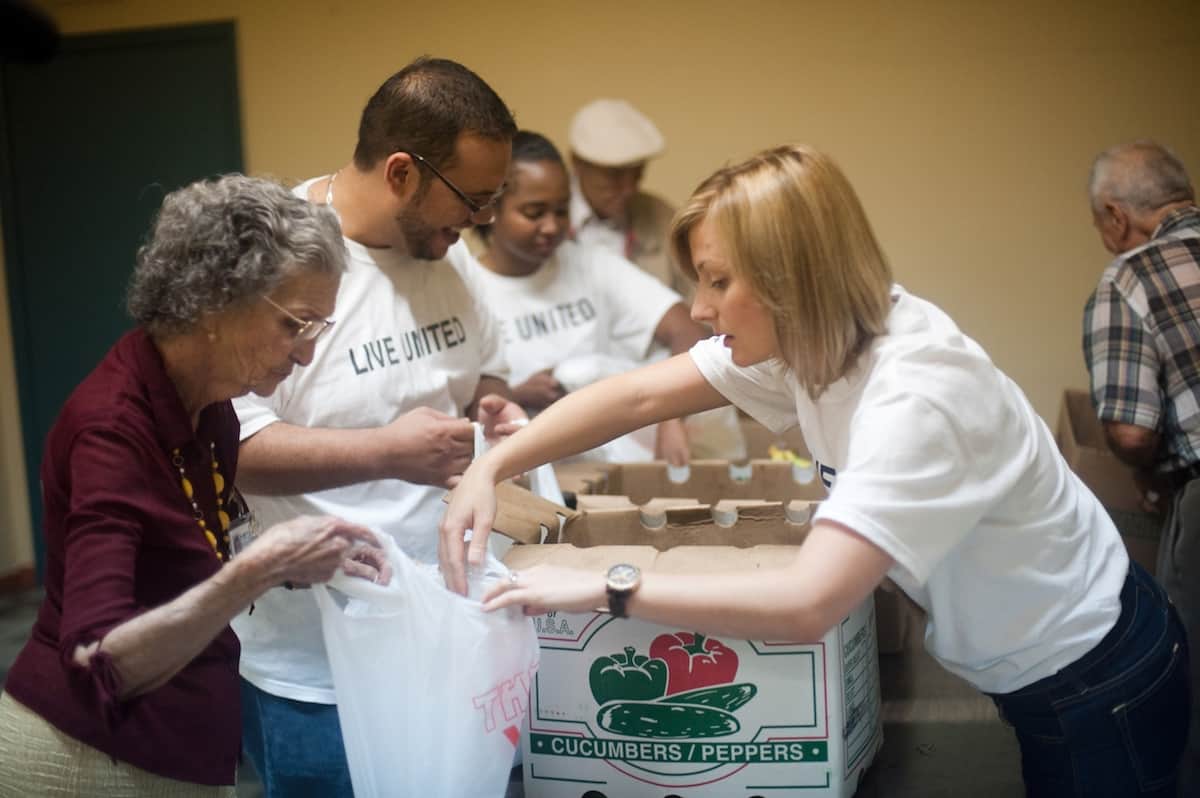It’s at the drive-thru, the dining room table, the cafeteria and the grocery store. It’s what our bodies use to keep us energized, healthy and alive at all. It’s sweet, spicy, savory, salty. (Hungry yet?) It’s food.
In recent decades, United States experts have turned pyramids into plates (literally) and we’ve learned more as a society about the importance of the food we eat. With new diet trends like paleo and keto growing in popularity, you might think we’re finally taking mealtime a little more seriously.
In the United Way ALICE study, researchers note 13% of households in the U.S. faced hunger in 2015. Families strapped for cash will choose unhealthy food, eat less food or forego other essentials like health care or child care, just to make ends meet. Ironically, food insecurity (or consistent lack of enough food) and obesity are actually linked. Pair that with the estimated $160 billion spent on health care costs related to food insecurity in 2014 and it’s clear: we’ve got to get serious about nutrition in community.
Though Tennessee wasn’t one of the states included in the ALICE study, things aren’t looking so great. In 2016, nearly 35% of adults in Tennessee were obese. You may think Nashville hot chicken or Memphis barbecue is to blame…and, sure, they aren’t helping nutrition in the Volunteer State. But, access to healthy food is proving to be a root issue for the widespread lack of nutrition.
Food deserts and food swamps in urban areas leave some neighborhoods without access to fresh, nutritious food. A food desert refers to an area within a city where there is no grocery store within reasonable distance. The aptly named food swamp refers to an area where the only food choices are greasy fast food or heavily processed snacks. For residents living in a food desert or swamp without access to transportation, the ability to make healthy choices gets thinner.
Chattanooga isn’t immune to the reach of food deserts and swamps. In fact, food was the top need fielded by United Way’s 2-1-1 referral line in 2017. As you might expect, the specific neighborhoods where crisis food requests come from are areas where there are the most single-parent households, individuals without a high school diploma and households with income below the poverty level. According to the USDA, there were as many as 18 areas in 2015 in Greater Chattanooga that would be classified as food deserts.
So, what can we do to get on-track when it comes to nutrition? The ALICE study says programs like SNAP and WIC can reduce the cost of healthy food and make nutrition easier and more accessible for struggling families.
Locally, Dr. Eileen Rehberg, director of Data Analysis and Strategy at United Way, says communities should focus on strategies that eliminate food deserts and food swamps to alleviate a domino effect of other issues.
“The data is clear on the linking of food insecurity to other issues,” she said. “Every community should have access to the nutritious food they need to thrive. I’ve seen myself what can happen when community members, empowered with information, rally together to create change. It’s exciting to think we can change these statistics if we work together.”
If you or someone you know is struggling to find enough food, call 2-1-1 to be connected with a referral specialist who can help.
